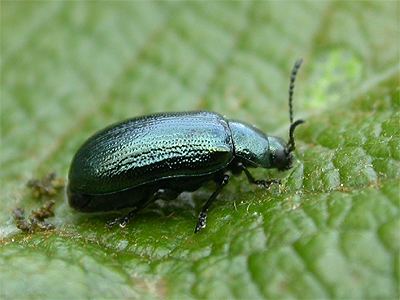Order Coleoptera Subfamily Chrysomelinae Rank Species | Family Chrysomelidae Genus Phratora Higher classification Phratora | |
 | ||
Similar Phratora, Beetle, Leaf beetle, Insect, Phratora vitellinae | ||
Description
The blue willow beetle (Phratora vulgatissima), formerly Phyllodecta vulgatissima, is a herbivourous beetle of the family Chrysomelidae. It is black with metallic shine in nuances individually varying from a more common blue to a rarer bronze. It is distinguished from P. vitellinae by the latter more commonly displaying bronze nuances. The larvae undergo three instar stages from hatching to pupation.
Contents
Ecology
The blue willow beetle is found on aspen and various willow (Salix) species in fens, carrs and on river banks, but also often in willow short rotation coppice in agricultural landscapes. It often aggregates on host plants. On Salix cinerea, it prefers and is more common on female than male trees despite higher egg predation exerted by Anthocorisnemorum on the former. It is univoltine in Sweden but can produce multiple generations per year in other parts of its distribution range. Proliferation of larvae and egg production varies with vegetation. It overwinters under lichens on trees and under tree bark. Predators of blue willow beetle eggs are common flowerbug (Anthocoris nemorum) and Orthotylus marginalis, and the adult is a vessel for larval development for the parasitoid wasp Perilitus brevicollis.
The blue willow leaf beetle as a pest
In Europe, the blue willow beetle is the most severe herbivore on Willows. For plantations of common osier (Salix viminalis), herbivory reducing biomass production by up to 40% has been estimated . It is susceptible to Bacillus thuringiensis tenebrionis and also Spinosad when treatment is applied to affected plants.
